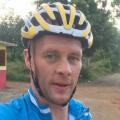
IMAGINE for a moment you are hanging from
the face of a mountain.You are metres away from safety yet have nothing left both physically and mentally for that one last push to reach safety.
In that moment, you know you are about to meet your own mortality. Do you think you could find something extra?
It’s quite possible many of us feel this way right now – and are wondering ‘how much more can I take?’
For a young German climber, Toni Kurz, this was a reality – not just a metaphor.
In 1936 Kurz was part of a team that took on the north face of the Eiger. It was a feat that had never been done before due to the sheer difficulty of the climb.
During this attempt, one of the climbers was hit by a falling rock which left him with injuries that forced the team to turn back.
As they made their way down the Eiger, an avalanche was triggered above and came down the mountain.
One of the team who had unclipped his rope was instantly swept to his death.
Another fell – still roped onto the team – and crashed into the rocks below, dying on impact.
The climber who was higher up and had the rope wrapped around his chest died from asphyxiation.
This left Kurz hanging on the rope, alive and uncertain of what was to come next.
I have always found great inspiration from the mountains and from those who explore them, pushing out of their comfort zones in the pursuit of their goals.
There are a lot of lessons we can take from these explorers and adventure athletes which can help us in our daily lives.
For me personally, these stories have given me strength in facing my tumours. They have taught me how to live.
I am always searching for a better understanding of life, and I recently just finished a short course from the University of Michigan called Finding Purpose and Meaning In Life which explained what we can learn from the story of these climbers.
The professor spoke about facing your own mortality and how this can actually help you to live a more purposeful life.
Some adventure athletes have said that they never felt more alive than when they were most at risk. I can relate to this – both from a sport side and surgery side.
Memories of skiing off piste when you live for each turn, to those long walks to the anaesthetic room. They were moments in my life that gave me that feeling... the feeling that tomorrow didn’t matter and all that really mattered was the right now.
I understand this can be a hard way to live. Amid all the uncertainty that Covid-19 has put upon us, it is easy to get pulled into a state of anxiety around the future.
I always try to challenge myself to the philosophy of Marcus Aurelius: Live not one’s life as though one had a thousand years, but live each day as the last.Finding something extra right now means different things to different people. Each of us has different comfort zones that we must push out of.
The year 2020 has challenged most of mankind so far, but as I sit thinking of Kurz hanging on this rope, exposed for four nights in freezing conditions with his team dead around him fighting for his life, I try to imagine what this 23-year-old was thinking. How did he stay strong?
As a rescue team tried to reach him, Kurz had to cut the rope below him, which would see his friend fall to the ground below, to get himself into the best position for a rescue attempt.
The rescue team had dropped their long rope on the way to Kurz and were
left with two short ropes instead, so they tied them together and passed the rope to him so he could abseil down to safety.
Unfortunately as Kurz abseiled down he hit the knot that held both ropes together.
Unable to pass the rope through his carabiner, he tried for hours to push the knot through as the rescue team watched on – unable to do anything to help.
After surviving four nights hanging on a rope, it was going to be a knot that would be his biggest challenge. As the rescue team looked on a few metres away, Kurz said the words “I can’t go on anymore”.
They were his last words.
But we can still learn from the way Toni Kurz pursued his passion to the end. And how he fought so hard on the unforgiving north face of the Eiger.



Comments & Moderation
Readers’ comments: You are personally liable for the content of any comments you upload to this website, so please act responsibly. We do not pre-moderate or monitor readers’ comments appearing on our websites, but we do post-moderate in response to complaints we receive or otherwise when a potential problem comes to our attention. You can make a complaint by using the ‘report this post’ link . We may then apply our discretion under the user terms to amend or delete comments.
Post moderation is undertaken full-time 9am-6pm on weekdays, and on a part-time basis outwith those hours.
Read the rules here